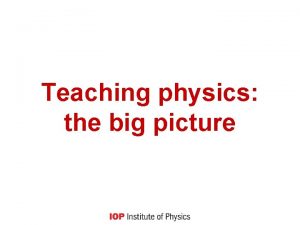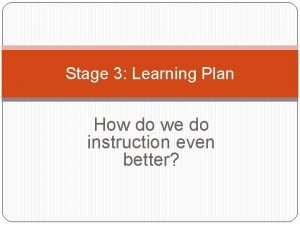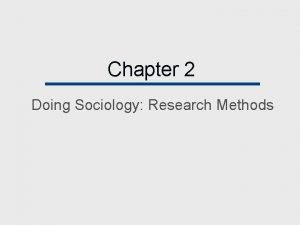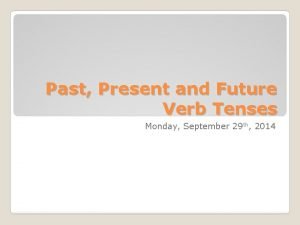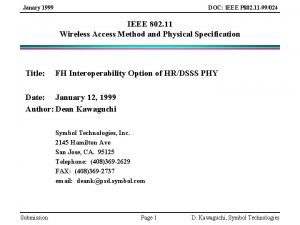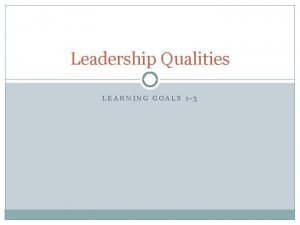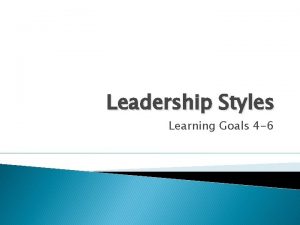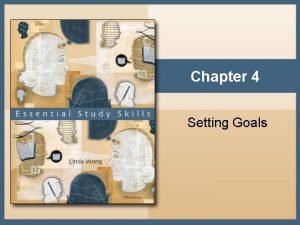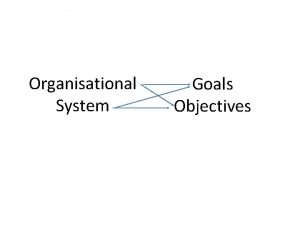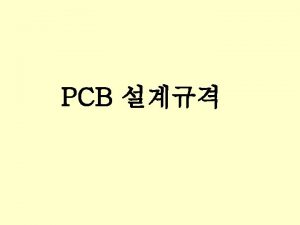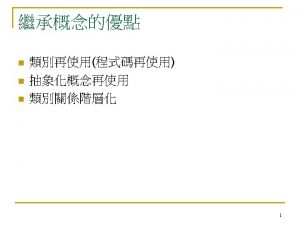Class 5 Learning Goals Monday Janary 9 th


























- Slides: 26

Class 5 Learning Goals Monday, Janary 9 th, 2017 Lipids and Membranes • After this class, you should be able to: – – Classify a molecular as one of three main classes of lipids Describe the structure and formation of a lipid bilayer Predict the comparative solubilities of any two molecules Predict the solubilities of a molecule through two different bilayers

Lipid Structures Peer Instruction 1) What are the defining features of each class of lipids? 2) Which are amphipathic, and why?

1) Why do lipid bilayers form? Peer Instruction 2) In what ways can individual phospholipids move within a bilayer?

Peer Instruction Explain this data.

Peer Instruction What compounds cross lipid bilayers most readily? Rank these molecules from most to least likely to cross a plasma membrane: Glucose CO 2 H 2 O O 2 K+

Peer Instruction Are membranes with straight lipid tails more or less permeable than membranes with kinked tails? Are membranes with long tails more or less permeable than membranes with short tails? Are warmer membranes more or less permeable than colder membranes?

Membranes: Saturation of C-C bonds in lipid tails

Key Concepts • • What kind of lipid is estradiol? Safflower oil? Will a lipid bilayer form faster in pure water or muddy water? Why? Which will go through a lipid bilayer faster: – Benzene or methane? Potassium ions or methane? Glucose or ATP? Through which membrane will sodium ions move more quickly: – A membrane with long, straight tails or short, kinked tails?

Peer Instruction Are membranes with straight lipid tails more or less permeable than membranes with kinked tails? Are membranes with long tails more or less permeable than membranes with short tails? Are warmer membranes more or less permeable than colder membranes?

Tuesday January 10 th, 2017 Class 6 Learning Goals Transmembrane Transport and Organelles • After this class, you should be able to: – Predict the polarity of any part of an integral membrane protein – For each of three types of membrane transport, – Describe the logic for the cell of that transport type – Describe the mechanism – Be able to identify the type of transport from a scenario – Name and predict the enzymatic components inside any of the organelles in the given table – Identify membrane movements necessary for – organelle function – the sorting/production/delivery of non-cytoplasmic proteins – Trace the path of transport and development for a protein or lipid moving through the endomembrane system.

Peer Instruction Vesicles can form from membranes: Vesicles can be absorbed into membranes: This can be spontaneous, but is usually guided by proteins.

Peer Instruction Explain these three mechanisms for cellular digestion. (One sentence each, maximum) Lysosome Endosome Lysosome Vesicle from Golgi apparatus Damaged organelle

Organelles: The Lysosomes are singlemembrane-bound centers for storage and/or waste processing. Materials are delivered to the lysosomes by three processes: -phagocytosis, -autophagy, and -receptor-mediated endocytosis. (Peroxisomes are very similar, with a Peroxide-based microenvironment) Microenvironment: Acidic Material being digested within lysosomes

Organelle Cellular Role Nucleus (Covered in great depth in 355) Lysosome Peroxisome Vacuole Mitochondria (Covered in depth in Week 5) Chloroplast (Covered in great depth in 220) Rough ER Smooth ER Golgi Apparatus Ribosomes (Covered in depth next week) Cytoskeleton Plasma membrane (Covered in depth yesterday) Specialized components Microenvironment

The Endo. Membrane System: The protein & lipid factory • Comprised of – the rough ER, – the smooth ER, and – the Golgi apparatus, • The EMS is the primary system for protein and lipid synthesis. This system allows production, processing and transport of specific and diverse molecules. Nucleus

EMS Organelles: The Rough ER A Protein Synthesis and Processing Complex • • The rough ER is contiguous with the nuclear membrane New proteins are directly inserted into the ER Microenvironment: noncytoplasmic molecular Lumen of conditions for protein folding rough ER After processing, proteins are transported to other destinations Ribosomes on outside by controlled vesicle budding Free ribosomes in cytoplasm

EMS Organelles: Smooth ER A Lipid-Handling Center and Storage Site • The smooth ER is the major processing zone for lipids • Smooth ER lacks ribosomes, naturally • ER hosts non-cytoplasmic molecular conditions and specialized enzymes • After processing, lipids are transported to other destinations by controlled vesicle budding Smooth endoplasmic reticulum Lumen of smooth ER

EMS Organelles: The Golgi Apparatus A Site of Protein Processing The cis face is oriented towards the rough ER • • A site for carbohydrate modification of proteins Packaging and transport to cellular locations with vesicles Formed by a series of stacked flat membranous sacs called cisternae. Receives products from the rough ER and sends finished products to the cell surface in vesicles. The trans face is oriented away from the rough ER Golgi apparatus cis face Vesicle Lumen Cisternae Vesicles trans face

Wednesday, January 11 th, 2017 Class 7 Learning Goals The Endomembrane System and Cell Movement • After this class, you should be able to: – Trace the path of transport and development for a protein or lipid moving through the endomembrane system. – Explain the dynamic nature of cytoskeletal elements – Analyze and identify errors in a description of cellular movement

Organelles: The Cytoskeleton • The cytoskeleton is a complex network of fibers that helps maintain cell shape by providing structural support. • The cytoskeleton is dynamic; it changes to alter the cell’s shape, to transport materials in the cell, or to move the cell itself. • The three types of cytoskeletal elements are – actin filaments, – intermediate filaments, and – microtubules. Raven & Singer, 7 th Edition

Organelles: Cytoskeletal building Peer Instruction • The smallest cytoskeletal elements are actin filaments, also known as microfilaments. • Actin filaments form by polymerization of individual actin molecules. the ‘-’ end the ‘+’ end ‘actin polymerase’ ‘actin depolymerase’ • How does this filament move to the right?

You have: Peer Instruction a cytoskeletal filament a motor protein a vesicle a plasma membrane around the cell Draw the answers: How does your cell move a vesicle towards an organelle? How does your cell move part of the plasma membrane?

1. ‘Crawling’ time 1 time 2 nucleus Peer Instruction time 3 nucleus 2. ‘Chasing’ nucleus target 3. ‘Contraction’ nucleus

Key Concepts • • Why do you expect amino acid side chains on the outside of an integral membrane protein (but within the bilayer) to be hydrophobic? Explain the matches between three possible transport situations… – facilitated diffusion, active transport, and passive diffusion …and three cellular situations – a need for extreme rapid transport, intake of a common large molecule, letting a rare waste molecule out of the cell What specialized enzymes would you expect in a mitochondrion? In the Rough ER? What microenvironment is unique to the nucleus? To the peroxisome? Imagine: – 1) a lipid destined to become part of the plasma membrane, and – 2) a protein that will be released outside of the cell. • Describe the differences in the pathways taken by each molecule. Where or when does each pathway utilize the joining of lipid membranes? What would happen to a crawling cell that instantly lost all actin polymerization enzymes? Be as specific as possible. Where is energy used in the movement of a single cell? Bonus question: Where does the energy come from to move Golgi vacuoles to different parts of the cell? There are two very different answers…

This diagram contains an implicit inaccuracy. What is it? nucleus ER Mitochondrion

Concept Questions • • Why do you expect amino acid side chains on the outside of an integral membrane protein (but within the bilayer) to be hydrophobic? Explain the matches between three possible transport situations… – facilitated diffusion, active transport, and passive diffusion …and three cellular situations – a need for extreme rapid transport, intake of a common large molecule, letting a rare waste molecule out of the cell What specialized enzymes would you expect in a mitochondrion? In the Rough ER? What microenvironment is unique to the nucleus? To the peroxisome? Imagine: – 1) a lipid destined to become part of the plasma membrane, and – 2) a protein that will be released outside of the cell. • Describe the differences in the pathways taken by each molecule. Where or when does each pathway utilize the joining of lipid membranes? What would happen to a crawling cell that instantly lost all actin polymerization enzymes? Be as specific as possible. Where is energy used in the movement of a single cell? Bonus question: Where does the energy come from to move Golgi vacuoles to different parts of the cell? There are two very different answers…
 Strategic goals tactical goals operational goals
Strategic goals tactical goals operational goals Strategic goals tactical goals operational goals
Strategic goals tactical goals operational goals Monday math class
Monday math class No class on monday
No class on monday General goals and specific goals
General goals and specific goals Examples of generic goals and product-specific goals
Examples of generic goals and product-specific goals Cuadro comparativo e-learning m-learning b-learning
Cuadro comparativo e-learning m-learning b-learning Big picture learning goals
Big picture learning goals Amt learning goals
Amt learning goals Chapter 7 learning goals outline sociology
Chapter 7 learning goals outline sociology Establish mathematics goals to focus learning
Establish mathematics goals to focus learning Planning goals and learning outcomes
Planning goals and learning outcomes International primary curriculum
International primary curriculum Advantages and disadvantages of observation method
Advantages and disadvantages of observation method Monday tuesday wednesday thursday friday calendar
Monday tuesday wednesday thursday friday calendar Monday welcome back
Monday welcome back My favorite day is saturday
My favorite day is saturday What ... you ... last weekend
What ... you ... last weekend Monday evening prayers
Monday evening prayers Monday morning prayer images
Monday morning prayer images Art and music are my favorite subject
Art and music are my favorite subject World literature acrostic poem
World literature acrostic poem Past tense of on monday
Past tense of on monday Monday prayer for work
Monday prayer for work Monday dua
Monday dua Happy monday quizzes
Happy monday quizzes Monday.ocm
Monday.ocm







